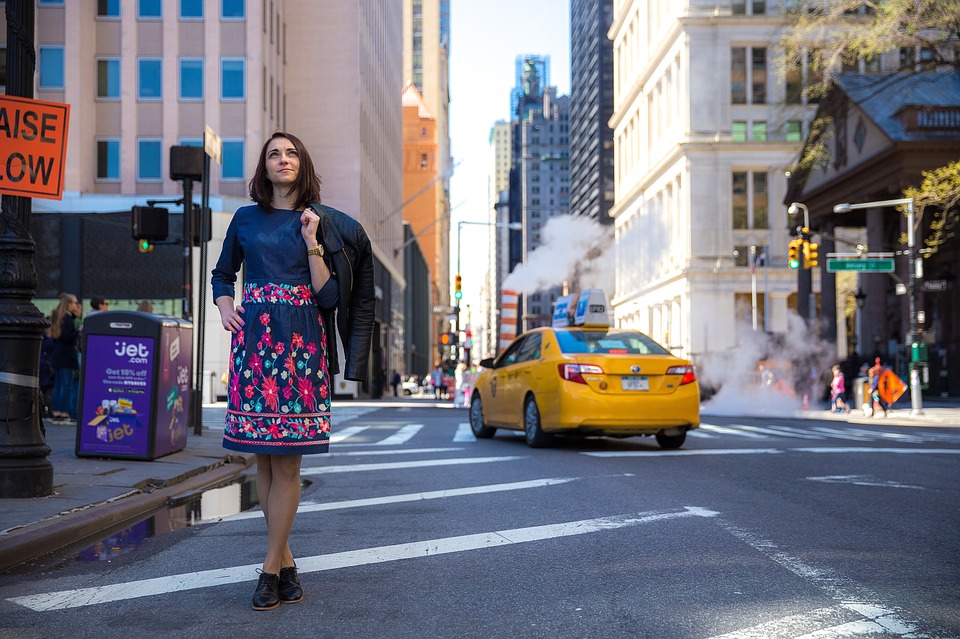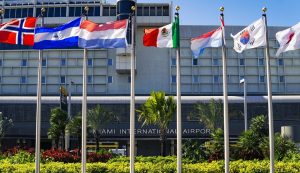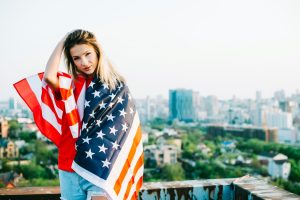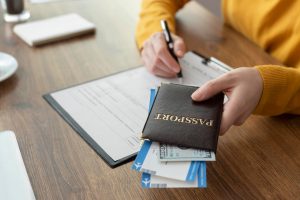U.S. Visa Interview

The U.S. visa interview is the most important and final step before a future traveler or immigrant can go to the United States. The outcome of this stage will determine whether the applicant can cross the U.S. border, so we want to prepare future immigrants for this process.
We assume that you have already read through our website, prepared all the supporting documents, filled out the DS-160 form, and scheduled your U.S. visa interview, and are ready to attend it at the consulate.
The Day of Your U.S. Visa Interview
So, the day has come when you need to arrive at the embassy. You are dressed neatly, your hairstyle is simple and modern without any extravagance, makeup is subtle if you’re a woman, and for men, you’re either clean-shaven or with a well-groomed beard. You should bring only the essentials, and depending on the country, be prepared that electronic devices like phones, tablets, or computers may not be allowed in the visa center. Therefore, it’s better to leave unnecessary items at home. If needed, there may be people outside the visa center who, for a fee, will hold your belongings in their cars.
About half an hour to an hour before your scheduled interview time, you should enter the building, where security will check your personal items and ask you to leave any unnecessary ones. There is no need to arrive too early, especially in winter, as you may be asked to wait outside until your appointment. Inside the building, there may be a metal detector (depending on the country) that will react to any metal items, so security will find anything concealed. The only electronics allowed are medical devices essential for the applicant’s health, such as hearing aids or insulin pumps. Food and drinks must also be left outside. Women are allowed to bring a small handbag, while men can bring a small bag with documents. Large bags, backpacks, and briefcases must be left outside.
If the queue for your scheduled day and time is longer than usual, certain actions may take place outside. For example, a consulate employee may approach you and ask to check your documents for verification or direct you where to stand.
After passing through security, you will proceed to an officer who will ask for your printed DS-160 form and your appointment confirmation letter for re-registration in the live queue with a number that allows you to track your progress (electronic queue). After this, you can wait in the hall for your turn to be called to a window with the visa officer who will handle your interview.
While waiting, it’s best to sit quietly, gather your thoughts, and avoid talking to anyone in the room. The less noise you make, the better. Any unnecessary noise may be perceived as nervousness, and the officer may notice it, which could negatively affect the outcome of your interview.
U.S. Visa Interview with the Consular Officer
So, you’ve been called to the consular officer, and you should approach the window and stand there. There are no private rooms, no tables or chairs. Everything happens standing up and in a very short time, usually 2-3 minutes for each individual or family/group applying together. You will experience a brief round of questions, with little time to think, so your answers must be as quick and concise as possible. When you approach the officer, greet them with a light smile, showing friendliness, and present your passport. This is all they need to start the interview. Keep everything else with you and don’t present any other documents unless asked. No initiative, no unnecessary movements. Any excess actions may irritate the officer or make them think you’re nervous. Remember, in front of you is a highly skilled psychologist who can read your body language. Even if your documents are in order and your application is perfect, if your body language shows nervousness, this might signal to the officer that you are hiding something or that your intent to cross the U.S. border is very important to you, which could lead to a visa denial.
BUT! Don’t overplay with indifference or arrogance. This is the other extreme, which will also raise questions from the consular officer. So, don’t try to force an overly calm demeanor, and certainly don’t overuse sedatives before the interview. Imagine you’re confident the visa will be approved, you’re in a good mood, but nothing too extraordinary will happen in your life if you get it. You’ll go to the U.S., great — but it’s no big deal…
The main goal is neutrality and calmness. That’s the attitude you should have throughout the interview with the officer.
The consular officer will take your documents, ask the first question, and wait for your response. You answer casually, and they look at your answer and ask the next question. There may be several questions. The number of questions will directly depend on your level of calmness. If you don’t understand something, ask for clarification — there’s nothing wrong with that.
What the Visa Officer Will Ask During a U.S. Visa Interview
During the U.S. visa interview, the officer wants to hear from you that you are clear about why you are going to the United States and that you will not stay there longer than necessary to meet your travel or business needs.
If asked about your job, you should mention the company, your position, and briefly what you do. Example: “I work at E-migrating as a copywriter, filling the blog with information about the U.S. for future tourists.”
If asked about family, you should mention your current marital status and, if you have children, mention their ages. Example: “Yes, I’m married, and I have two children, ages 3 and 4.” If there are additional questions about family, briefly answer them as well.
The visa officer will gradually move on to questions about the trip itself. Here, you need to briefly explain what you plan to do in the U.S. or the purpose of your visit. Do not mention already purchased tickets or booked hotels, and it’s strictly prohibited to do so. Everything you answer should be in the future tense — what you will buy, book, or rent. The visa officer should not feel any pressure from knowing you’ve already purchased everything, and a denial would disrupt your plans. Any pressure on the visa officer is viewed very negatively, so answer carefully about your future trip. All responses should sound like, “I want to go there,” “I want to visit this,” and so on.
The list of questions can be extensive, and it’s hard to prepare for everything, but it’s possible. We’ve put together a list of questions that may potentially be asked during the interview.
Purpose of the Interview for Visa Issuance:
- What is the purpose of your trip to the U.S.?
- Who is your sponsor, or where are your savings from?
- Where exactly are you going?
- Why do you want to visit these specific cities? What will you do in each of them?
- What will you be doing in the U.S.? What’s your plan?
- Where do you plan to stay?
- Tell us about your travel itinerary. How will you move around the U.S.?
- Do you have relatives in America?
- Why haven’t you been to the U.S. before?
- Have you been to the U.S. before? What did you do? Which cities did you visit? Where did you stay?
- What countries have you visited in the last few years? Where did you travel last?
- Have you been denied a U.S. or European visa? Why were you denied?
- Who do you usually travel with? Why aren’t they coming with you this time?
- Do you speak English? What is your level?
- Who do you work for, and what is your job? What are your responsibilities?
- Do you have children or family?
- What does your spouse do for a living? What is their job and field of activity?
- Who are your main clients/partners/suppliers?
- Which countries have you visited before?
- Do you have any hobbies?
- What do you want to see in the U.S.? What do you know about the U.S.?
This is not the full list of questions, but the commonly asked ones when applying for a tourist or business visa. Prepare your answers and practice them over a few days before the interview, so the responses come out naturally.
You will find out if your visa has been approved right after the interview. If approved, you will be asked to leave your passport, which will be delivered to you by courier within a few days with the visa affixed. If you are denied the visa, you can take your passport home with you.
There’s another option: if you are applying for a more complex visa, the visa officer may schedule an additional review of the applicant’s materials. In this case, you will need to provide copies of all documents via email. You’ll take your passport with you, and when the review is complete and you receive confirmation that the visa will be approved (via email), you will need to send your passport through a courier, and the process will proceed as usual.
If you are denied the visa, do not pressure the visa officer in an attempt to change their decision. This will only worsen the situation. You can reapply for a visa as many times as you want, but each new denial reduces the chances of getting the visa, so it’s best to try to get everything right the first time. If you are unsure about your abilities, it’s a good idea to consult with a company that specializes in visa applications, so they can advise you on the U.S. visa interview process and explain the nuances, especially if they have knowledge of the local situation at the visa center.
Table of Contents


